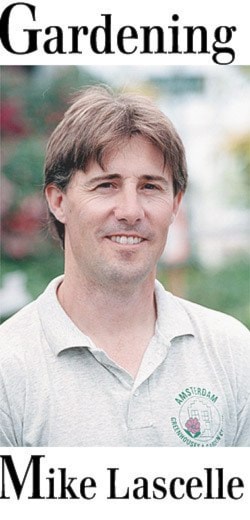I am pretty sure that my days of cycling after work are coming to an abrupt end.
It might be the monsoon-like rains, the ever-diminishing daylight or the sudden flurry of road construction on 232nd Street, but something is putting a damper on my two-wheeled karma.
Still, as I savor these last few evening rides and glance into the many gardens I pass by en route, I can’t help but notice a few diehard perennials that seem to be blooming their hearts out despite the miserable weather and cooler temperatures.
Their persistence almost makes me want to get a bike light and don the rain gear to extend my own cycling season, but then I remember the punishing spray that blasts you with every passing SUV or minivan (the much-preferred means of transportation in Maple Ridge). Then that noble, but impractical notion quickly dies.
But that shouldn’t stop you from enjoying a few of these bold autumn-flowering perennials in your own garden, even if you only get to appreciate them from inside a picture window with a hot mug of tea or coffee in hand. With this in mind, here are a few selections that you should be able to find at your local garden centre:
• Rudbeckia ‘Herbstsonne’ (syn.’ Autumn Sun’) – This is the Godzilla of Coneflowers, easily growing two to 2.5m tall and forming impressive, long-lived clumps. With our cooler spring this year I’ve noticed that local plantings have only been in full bloom for three to four weeks now.
The bright chrome yellow daisies are borne terminally, making a nice contrast against those few clear blue sky days – these have drooping petals and complimenting green to gold central cones.
This is a good choice to use in combination with warm-season grasses such as Miscanthus sinensis or Japanese Silver Grass, as they are both in their prime during the late season. Place these tall perennials in fence corners, towards the back of mixed borders or right beside elevated decks – so you can walk right up to the flowers.
One last hint with this particular plant is to not give it too fertile a soil (or over-fertilize), as you will only end up having to stake it.
• Eupatorium purpureum (subsp. maculatum) – If I could change one thing about this plant, it would be the common name, as no one wants to buy something called ‘Joe-Pye Weed’, and frankly I can’t blame them. It takes a lot of explaining on my part to convince potential buyers that this is a very garden-worthy specimen perennial. Not only is it a butterfly magnet in the early part of its blooming season (flowers from August to October), but it also makes an interesting cut flower for those of you arranging on a larger scale. There are several good choices here:
• ‘Atropurpureum’ – the tallest cultivar (2.5 to 3.3m) with spotted stems and large rose-purple terminal flowers;
• ‘Gateway’ – a compact form (rated at 1.6 to 2m, but often growing taller) with reddish-purple stems and big rosy-purple blossoms;
• ‘Little Joe’ (E. dubium) – a miniature cultivar (one to 1.3m tall) to grow in large containers or in urban gardens with limited space;
• ‘Bartered Bride’ – a white-flowered form, growing 2 to 2.5m tall.
This species has recently undergone a botanical name change, so in the near future you may hear it referred to as Eutrochium.
• Aster novi-belgii – too many of us have had a bad experience with asters, either by overcrowding them into planters (where they rot) or accepting a few free plants from a neighbour and watching them grow tall and flop over, just as they come into bloom. These perennials are best grown in mass (use at least three plants) in the foreground of full sun borders, with evenly moist (but not wet soil).
Asters will naturally stretch when grown in fertile conditions, so if you are having problems with leggy plants, be sure to pinch them back by mid-June.
My other advice when purchasing asters is to stick to named varieties (with the height and spread printed on the label) as opposed to the slightly cheaper generic pots, as almost all retail asters are treated with growth regulators and there’s no guessing how tall those no-name varieties will grow.
A couple of good newer varieties include ‘Hazy’ (vibrant hot pink single blooms) and ‘Believer’ (deep lavender blue flowers with contrasting yellow center).
As with Eupatorium, some of the asters have been reclassified, so sooner or later you’ll find Aster novi-belgii has been replaced by much more complicated Symphyotrichum novi-belgii.
Mike Lascelle is a local nursery manager and gardening author. Email him at hebe_acer@hotmail.com.
Blog
• Mike has uploaded a new story – a Dragonfly in Hand – to my garden blog at www.soulofagardener.wordpress.com and has added a few autumn-inspired updates to my plant selection site at www.mikesgardenstop5plants.wordpress.com.
